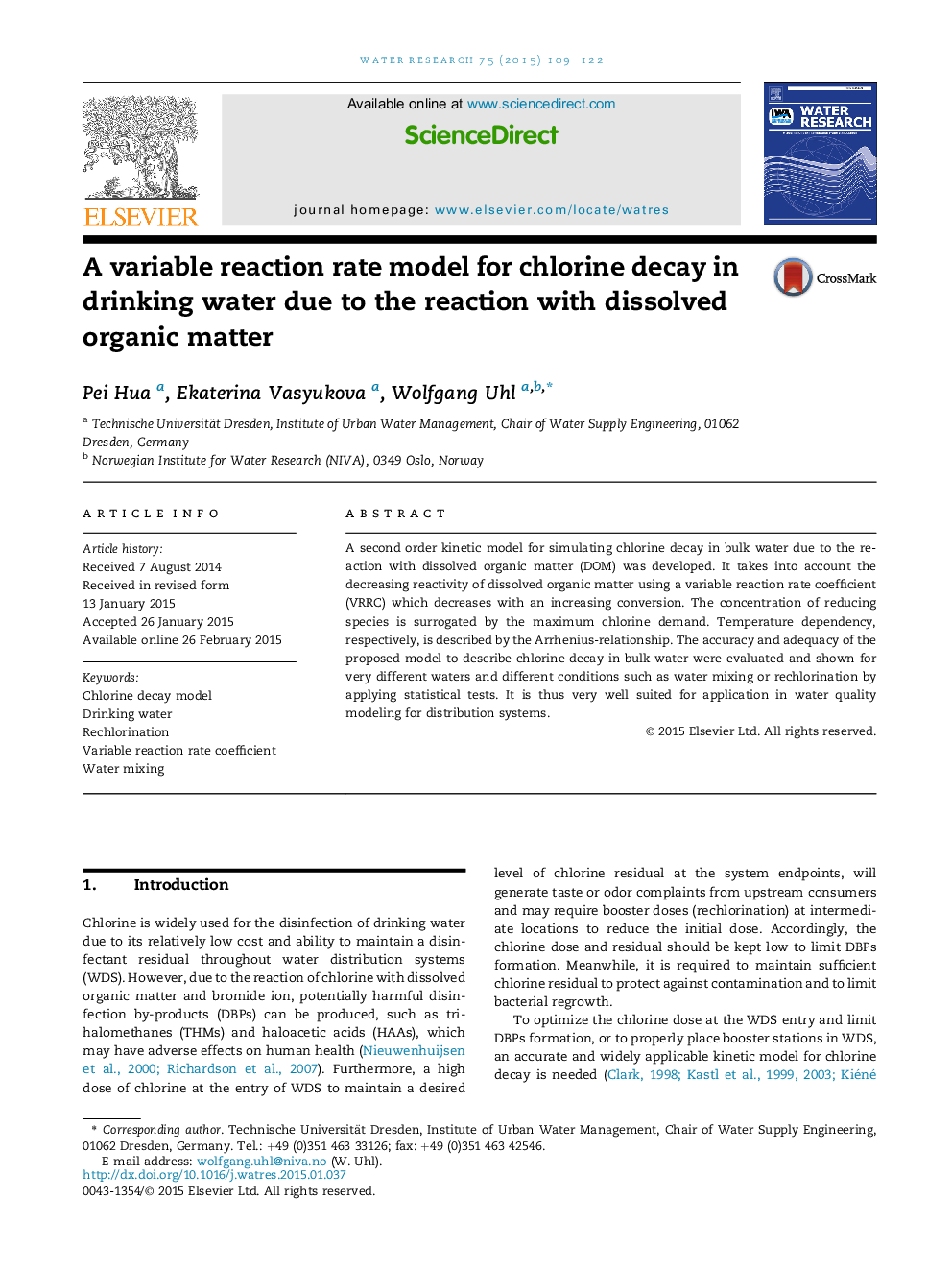| Article ID | Journal | Published Year | Pages | File Type |
|---|---|---|---|---|
| 4481205 | Water Research | 2015 | 14 Pages |
•A second order variable reactivity bulk chlorine decay model was developed.•The model considers the impact of initial chlorine dose and temperature.•The model applies for rechlorination and water mixing conditions.•The model needs no further calibration.•The model adequacy was demonstrated using statistical tests.
A second order kinetic model for simulating chlorine decay in bulk water due to the reaction with dissolved organic matter (DOM) was developed. It takes into account the decreasing reactivity of dissolved organic matter using a variable reaction rate coefficient (VRRC) which decreases with an increasing conversion. The concentration of reducing species is surrogated by the maximum chlorine demand. Temperature dependency, respectively, is described by the Arrhenius-relationship. The accuracy and adequacy of the proposed model to describe chlorine decay in bulk water were evaluated and shown for very different waters and different conditions such as water mixing or rechlorination by applying statistical tests. It is thus very well suited for application in water quality modeling for distribution systems.
Graphical abstractFigure optionsDownload full-size imageDownload high-quality image (147 K)Download as PowerPoint slide
